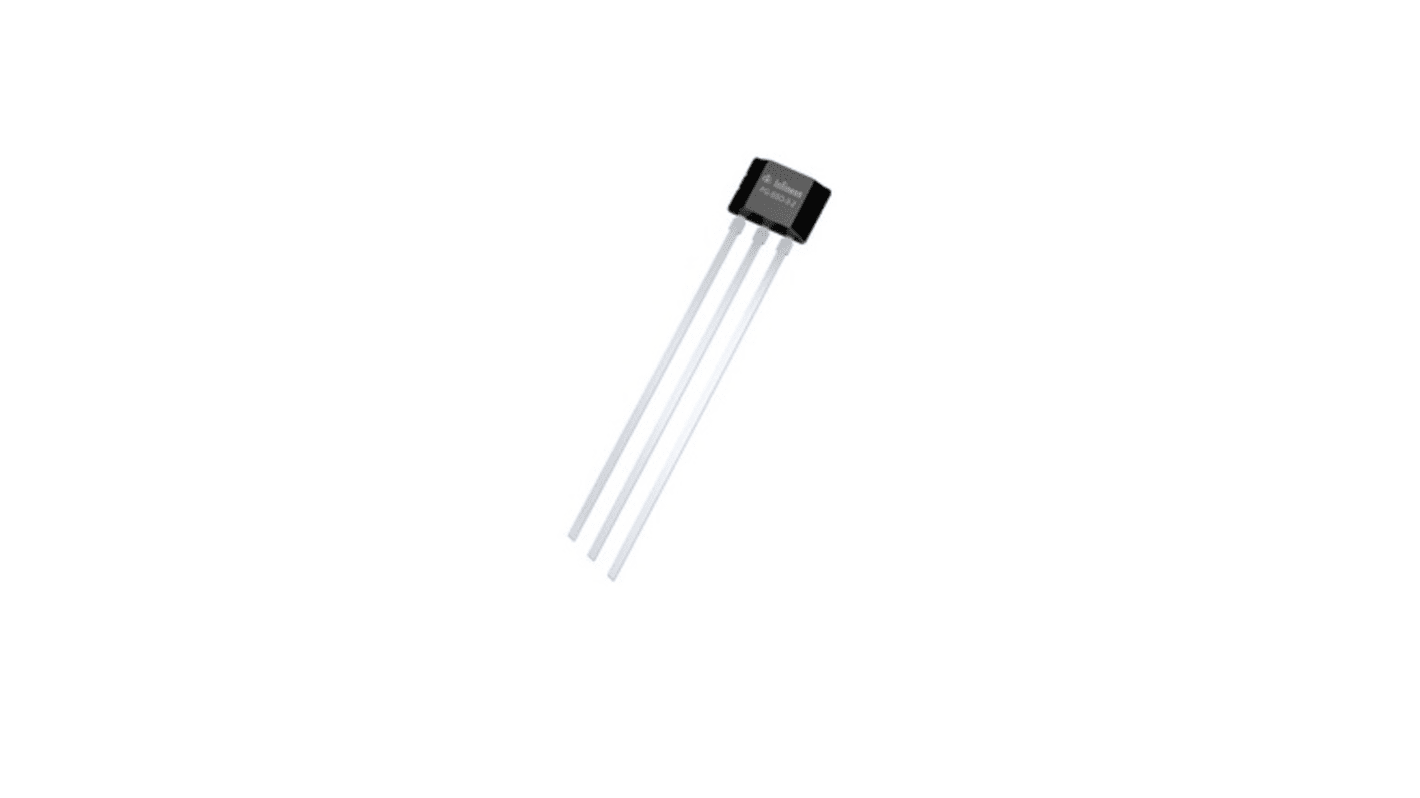Infineon SMD Hall Effect Sensor Latch, PG-SSO-3, 3-Pin
- RS Stock No.:
- 258-4117P
- Mfr. Part No.:
- TLE49681LHALA1
- Brand:
- Infineon

Bulk discount available
Subtotal 10 units (supplied as a tape)*
£8.40
(exc. VAT)
£10.10
(inc. VAT)
FREE delivery for orders over £50.00
In Stock
- 1,594 unit(s) ready to ship
Need more? Click ‘Check delivery dates’ to find extra stock and lead times.
Units | Per unit |
|---|---|
| 10 - 98 | £0.84 |
| 100 - 248 | £0.725 |
| 250 - 498 | £0.71 |
| 500 + | £0.695 |
*price indicative
- RS Stock No.:
- 258-4117P
- Mfr. Part No.:
- TLE49681LHALA1
- Brand:
- Infineon
Specifications
Technical Reference
Legislation and Compliance
Product Details
Find similar products by selecting one or more attributes.
Select all | Attribute | Value |
|---|---|---|
| Brand | Infineon | |
| Sensor Type | Hall Effect | |
| Mounting Type | SMD | |
| Magnetic Type | Bipolar | |
| Maximum Frequency Response | 10kHz | |
| Maximum Operating Supply Voltage | 32 V | |
| Minimum Operating Supply Voltage | 3 V | |
| Package Type | PG-SSO-3 | |
| Pin Count | 3 | |
| Maximum Operating Temperature | +170 °C | |
| Minimum Operating Temperature | -40 °C | |
| Automotive Standard | AEC-Q100 | |
Select all | ||
|---|---|---|
Brand Infineon | ||
Sensor Type Hall Effect | ||
Mounting Type SMD | ||
Magnetic Type Bipolar | ||
Maximum Frequency Response 10kHz | ||
Maximum Operating Supply Voltage 32 V | ||
Minimum Operating Supply Voltage 3 V | ||
Package Type PG-SSO-3 | ||
Pin Count 3 | ||
Maximum Operating Temperature +170 °C | ||
Minimum Operating Temperature -40 °C | ||
Automotive Standard AEC-Q100 | ||
Infineon Hall Effect Sensor Latch, 10kHz Maximum Frequency Response, 32V Maximum Operating Supply Voltage - TLE49681LHALA1
This Hall Effect Sensor Latch is a high-precision automotive component designed for SMD installation. Operating within a supply voltage range of 3V to 32V, it seamlessly handles bipolar magnetic detection in a compact PG-SSO-3 package. Ideal for automation and automotive applications, this sensor is built for durability and reliability across a temperature range of -40°C to +170°C.
Features & Benefits
• Supports a wide operating supply voltage from 3V to 32V
• Integrates reverse polarity protection up to -18V
• Features a maximum frequency response of 10kHz
• Designed for high sensitivity with magnetic thresholds at ±1mT
• Provides active error compensation for enhanced stability
• Integrates reverse polarity protection up to -18V
• Features a maximum frequency response of 10kHz
• Designed for high sensitivity with magnetic thresholds at ±1mT
• Provides active error compensation for enhanced stability
Applications
• Used for precise BLDC rotor position measurements
• Applicable in speed and position measurement for camshafts
• Utilised in automotive systems requiring high-sensitivity switching
• Integrated into industrial automation for effective sensor feedback
• Ideal for needing high-temperature tolerance
• Applicable in speed and position measurement for camshafts
• Utilised in automotive systems requiring high-sensitivity switching
• Integrated into industrial automation for effective sensor feedback
• Ideal for needing high-temperature tolerance
What is the significance of the bipolar magnetic performance?
Bipolar performance allows for accurate detection of both north and south magnetic poles, increasing versatility in various applications. It ensures reliable operation even when the direction of the magnetic field changes.
How does the temperature range impact the sensor's functionality?
Operating between -40°C and +170°C ensures consistent performance across extreme conditions, making it suitable for harsh automotive and industrial environments where temperature fluctuations are common.
What type of applications benefit most from the active error compensation feature?
Active error compensation is particularly beneficial in applications requiring precise measurements where environmental factors, such as temperature changes or mechanical stress, could affect sensor performance.
Does the sensor require additional components for overvoltage protection?
No additional components are required for overvoltage protection as this sensor can withstand up to 42V, simplifying the circuit design and enhancing reliability.
